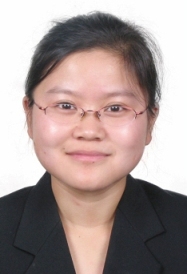 张燕玲,女,1980年出生,博士学位,研究员,硕士生导师。世界中医药学会联合会信息专业委员会理事,中医药信息研究会中医药信息数字化专业委员会委员,中华中医药学会会员,欧盟GP-TCM研究会成员。针对中药有效成分复杂、作用机理不明确的关键科学问题,整合中药学、生物学、信息学等多学科技术,构建体现中药特点的、高效快速的中药成分筛选、机理解析及中药设计的方法体系,揭示中药“多成分、多靶点、多环节整合调节”作用的科学内涵。已建立了中药网络构建、模块分析、作用机理解析技术平台,构建了含有常用500余味中药的2万余化学成分、300余靶点活性成分辨识模型、药物代谢动力学性质预测模型的数据平台。目前,共参加25项科研课题,包括国家级课题8项、省部级课题9项;参与国家973计划、国家支撑计划、国家自然基金重点项目等课题十余项;发表学术论文100余篇,其中SCI/EI论文46篇。
张燕玲,女,1980年出生,博士学位,研究员,硕士生导师。世界中医药学会联合会信息专业委员会理事,中医药信息研究会中医药信息数字化专业委员会委员,中华中医药学会会员,欧盟GP-TCM研究会成员。针对中药有效成分复杂、作用机理不明确的关键科学问题,整合中药学、生物学、信息学等多学科技术,构建体现中药特点的、高效快速的中药成分筛选、机理解析及中药设计的方法体系,揭示中药“多成分、多靶点、多环节整合调节”作用的科学内涵。已建立了中药网络构建、模块分析、作用机理解析技术平台,构建了含有常用500余味中药的2万余化学成分、300余靶点活性成分辨识模型、药物代谢动力学性质预测模型的数据平台。目前,共参加25项科研课题,包括国家级课题8项、省部级课题9项;参与国家973计划、国家支撑计划、国家自然基金重点项目等课题十余项;发表学术论文100余篇,其中SCI/EI论文46篇。
主要研究方向:
(1)中药活性成分发现。
(2)中药作用机理解析。
(3)中药设计与中药配伍研究。
承担的科研项目:
| 序号 | 项目名称 | 项目来源 | 项目开始时间 | 项目结束时间 | 排序 | |
| 1 | 点线面三维模拟活血化瘀中药防治冠心病的作用机制研究 | 国家自然基金 | 2012.1 | 2015.12 | 1 | |
| 2 | 基于源头创新的中药孵化基地建设 | 重大新药创制子课题 | 2011.1 | 2013.12 | 1 | |
| 3 | 中药靶标活性谱的构建及其在降血脂有效成分配伍中的应用研究 | 国家自然基金 | 2016.1 | 2019.12 | 1 | |
| 4 | 大黄等6种中药饮片标准化建设(兰州佛慈制药股份有限公司) | 国家中药标准化项目 | 2016.1 | 2018.12 | 4 | |
| 5 | 组分配伍与饮片配伍的相关性研究 | 973 | 2005.8 | 2010.1 | 3 | |
| 6 | 寒热药性的内在规律及共同属性研究 | 973 | 2006.8 | 2010.1 | 10 | |
| 7 | 中药有效成分群辨识技术研究 | 国家支撑计划 | 2010.12 | 2013.12 | 5 | |
| 8 | 中药辛/苦味活血化瘀功效的化学和生物学基础研究 | 国家自然基金重点项目 | 2015.1 | 2019.12 | 4 | |
| 9 | 基于花生四烯酸代谢途径的清热解毒中药有效成分信息辨识研究 | 教育部博士点课题 | 2010.1 | 2012.12 | 1 | |
| 10 | 科学研究与研究生培养共建项目-基于中医功效的中药设计技术研究 | 北京市教育委员会 | 2015.1 | 2016.12 | 1 | |
近三年作为通讯作者代表性论文:
1. The Mechanism Research of Qishen Yiqi Formula by Module-Network Analysis[J]. Evidence-based Complementary and Alternative Medicine, 2015, 2015(6):1-12.
2. Virtual Screening and Molecular Dynamics Study of Potential Negative Allosteric Modulators of mGluR1 from Chinese Herbs[J]. Molecules, 2015, 20(7):12769-86.
3. Discovery of potential negative allosteric modulators of mGluR5 from natural products using pharmacophore modeling, molecular docking, and molecular dynamics simulation studies[J]. Canadian Journal of Chemistry, 2015, 93(11): 1199-1206.
4. A combination of pharmacophore modeling, molecular docking, and virtual screening for P2Y12 receptor antagonists from Chinese herbs[J]. Canadian Journal of Chemistry, 2015, 93(1):311-316.
5. Identification of Potential ACAT-2 Selective Inhibitors Using Pharmacophore, SVM and SVR from Chinese Herbs[J]. Molecular Diversity 2016, 20(4):933-944.
6. Structure Identification and Anti-cancer Pharmacological Prediction of Triterpenes from Ganoderma Lucidum[J]. Molecules 2016, 21(5):1-14.
7. Discovery of potential orthosteric and allosteric antagonists of P2Y1R from Chinese Herbs by molecular simulation methods[J]. Evidence-Based Complementary and Alternative Medicine, 2016, 2016 (1):1-12.
8. A method to predict different mechanisms for blood–brain barrier permeability of CNS activity compounds in Chinese herbs using support vector machine[J]. Journal of Bioinformatics & Computational Biology, 2016, 42 (15):1223-1232.
9. Discovery of potential novel microsomal triglyceride transfer protein inhibitors via virtual screening of pharmacophore modelling and molecular docking[J]. Molecular Simulation, 2016, 42 (15):1223-1232
10. Discovery of Potential Inhibitors of Aldosterone Synthase from Chinese Herbs Using Pharmacophore Modeling, Molecular Docking, and Molecular Dynamics Simulation Studies[J]. Biomed Research International, 2016:1-8.
10. Virtual Screening for Potential Allosteric Inhibitors of Cyclin-Dependent Kinase 2 from Traditional Chinese Medicine[J]. Molecular, 2016, 21(9):1-14.
11. Traditional Chinese Bitter Flavor Theory: Is There Any Relation with Taste Type II Receptors[J]. European Journal of Integrative Medicine, 2016, 8(6), 980–990.
12. Discovery of Anti-Hypertensive Oligopeptides from Adlay Based on In Silico Proteolysis and Virtual Screening[J]. International Journal of Molecular Sciences, 2016, 17(12):2099.
13. Huo M, Wang Z, Wu D, et al. Using Coexpression Protein Interaction Network Analysis to Identify Mechanisms of Danshensu Affecting Patients with Coronary Heart Disease[J]. International Journal of Molecular Sciences, 2017, 18(6).
14. Zhang Z, Lu F, Liu H, et al. An integrated strategy by using target tissue metabolomics biomarkers as pharmacodynamic surrogate indices to screen antipyretic components of Qingkaikling injection[J]. Scientific Reports, 2017, 7(1).
联系方式:
通讯地址:北京市房山区阳光南大街北京中医药大学中药学院C座406
邮政编码:102400
E-mail: zhangyanling@bucm.edu.cn